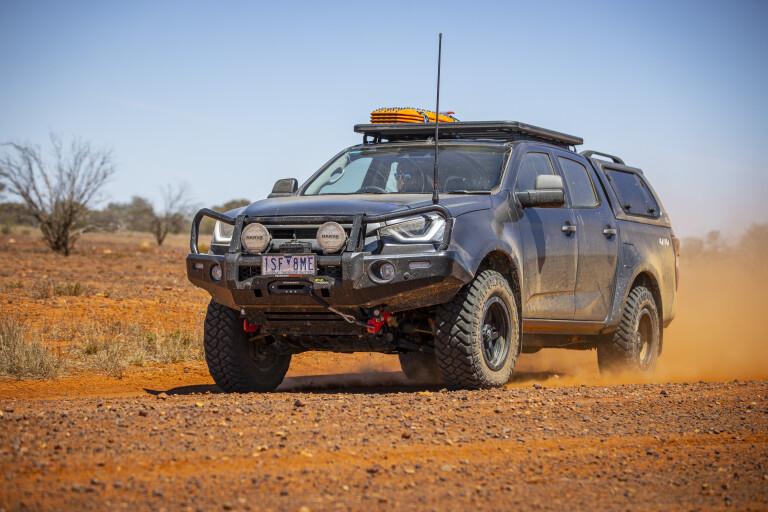
Well, it has certainly been a longer process than we would have liked, but the 4X4 Australia D-MAX is ready to hit the tracks.
Basically, we wanted to be one of the first to build a new-shape 2020 Isuzu D-MAX, transforming it into a capable and reliable mode of transport to assist with creating content for 4X4 Australia. Yep, a good old-fashioned touring four-wheel drive build.
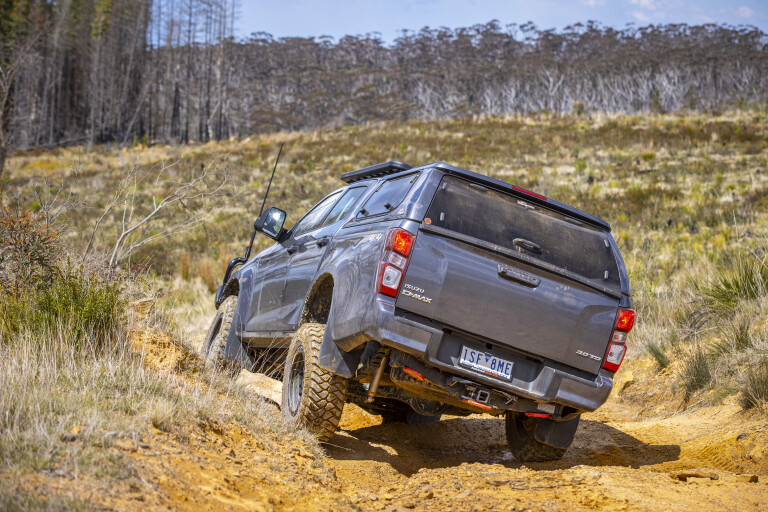
We need to depend on this vehicle for work; it has to be reliable and capable. Only the best gear would work for our requirements, and the hard work has certainly paid off. 4X4 Australia’s D-MAX is the very definition of a jack-of-all-trades.
While some say a four-wheel drive build is never truly done, we’re now at the stage where we’re confident to take the D-MAX anywhere we’d want to go. I’m sure you’ll agree … it’s not a bad looking rig either.
Protection
One of the very first things we did to our D-MAX was install an Ironman 4x4 Commercial Deluxe steel bullbar to the front. This allowed us to determine how much weight we had added to the front of the vehicle, then select the right suspension for our needs (we’ll discuss suspension later on).
As well as the stout frontal protection, we also had an Ironman 4x4 12,000lb winch with synthetic rope and Ironman 4x4 rated recovery points fitted at the same time. As the tools were out and the front-end in pieces; it makes sense to think ahead and get everything done at once to save time and money.

One such example is that we had a set of Narva Ultima 180 MK2 LED driving lights fitted at the same time as the Ironman 4x4 bar. It saved us a bit of coin, and meant we had a complete package ready to roll. Speaking of the Narva spotlights, I’m genuinely impressed with how bright they are for a seven-inch LED driving light. They take up less real estate on the bar over larger nine-inch lights, thus allowing more air flow, which is a good thing. I don’t see us needing any more light than they provide, even on dark outback roads.
With the front-end of the ute protected, it was time to look to the back of the D-MAX. Naturally, we wanted recovery points on the rear of the vehicle as well as the front, and this ute will be used for towing − which made our decision to install a Hayman Reese X-Bar an easy one.
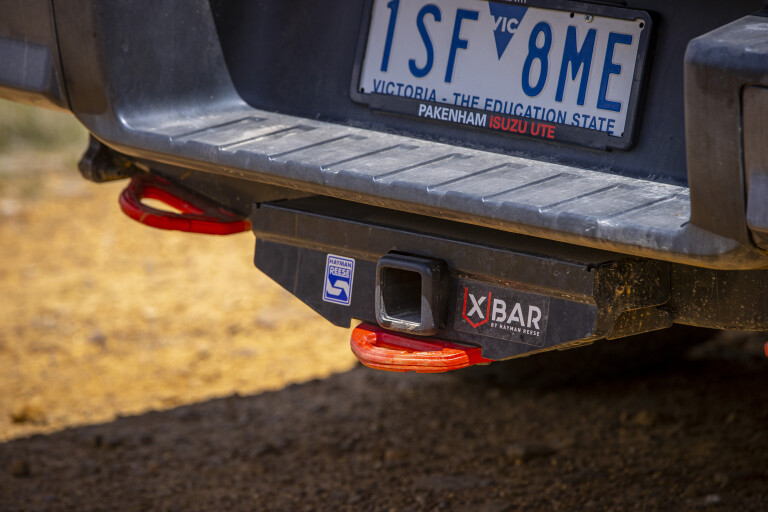
The X-Bar is rated to tow 3500kg and has three rated recovery points built into the towbar. These recovery points are soft-shackle compatible too, which allows us to use our MaxTrax soft shackles in recovery situations. The bar also sits up nice and high, offering maximum clearance when off-road.
As mentioned, the D-MAX is built to tow, so as well as the Hayman Reese X-Bar we bolted up some awesome MSA towing mirrors. They were easy to install, look like a factory fit (well, better actually), retain all safety gear from Isuzu, and are super simple to use.

We wanted to retain the factory tub on our D-MAX, but didn’t like the idea of leaving it exposed to the elements. After digging around online for a few weeks, we decided a fibreglass canopy from Piranha Off Road would fit the bill nicely.
Firstly, it looks the part and suits the lines of the D-MAX. Secondly, it has plenty of very useful features we use regularly such as central locking, rear demister, lift-up side windows and rated roof racks. It’s also fully lined inside with marine carpet, which is a neat touch.
I was surprised at how easy it was to install, the supplied wiring loom made it a quick job to hook up electrical connections, and the clamp mounting system meant no holes had to be drilled.
Touring mods
An XRS 330C UHF from GME was selected for communication duties, and is a quality bit of kit that gets used almost daily. It was also easy to install in the D-MAX thanks to a nice, big firewall grommet on the passenger’s side to pass cables through.
The unit itself sits under the transmission trim panels, so it tucked neatly out of the way. The handpiece sits on a magnetic mount on the dash, which was easy to install and works great compared to traditional mounts.

One of my favourite additions to the 4X4 Australia D-MAX, would have to be the dual-battery system. The brains of the dual-battery system is a 100amp/h slimline lithium battery from Invicta. This can be controlled via an app, so we can monitor charge and battery temperatures, and it provides more than enough grunt to power our fridge, charge camera gear and could run a decent sized inverter too. As well as being able to power our accessories, I’m amazed at just how light this Invicta slimline lithium battery is and just how fast it recharges.
The Invicta battery has been mounted on a trick Piranha Off Road battery tray, which was actually custom made for our vehicle and the Invicta battery. They are now in production and available to buy, which is super cool. The battery tray secures the battery to the rear wall of the D-MAX, and sits behind the back seat. This not only utilises otherwise wasted space, it protects the battery from the elements too.
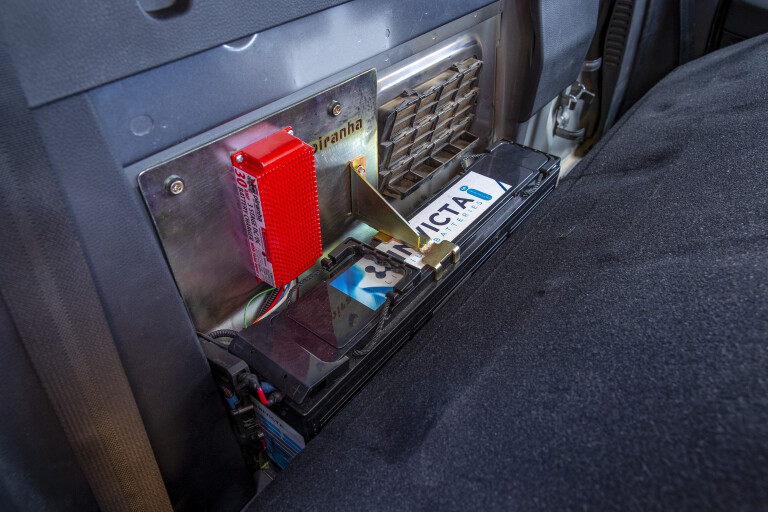
Powering the dual-battery system is a lithium-compatible 30amp DCDC battery charger from Piranha Off Road. It mounts directly to the battery tray, so it was an easy choice for us to make from a packaging point of view.
One other addition – which might seem like a small thing but has been an absolute game changer – is the TruFit 3D Maxtrac brand floor mats we installed before heading out for our recent run to Cobar. Honestly, the floor of the D-MAX would be utterly trashed without these floor mats. A simple hose off once we arrived home, and the vehicle looked like new again inside. A wise investment indeed!
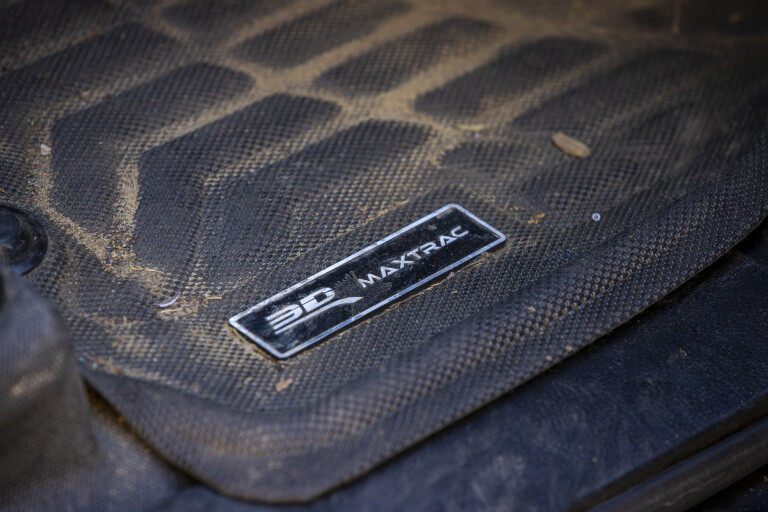
It’s also worth noting, we’ve taken out an insurance policy with Club 4X4 to cover all the accessories we’ve fitted to the D-MAX. It’s reassuring to know we also have $1500 worth of off-road recovery coverage available, in the event something goes wrong and we aren’t able to self-recover.
Performance upgrades
One of the most impactful additions made to our D-MAX would have to be the Tough Dog suspension. It not only gave us a roughly 40mm lift over stock, it completely transformed the way the D-MAX rides and handles. No more jarring over bumps, it simply absorbs whatever we throw at it. This suspension kit also handles the additional weight we’ve added without complaint, which is no easy task.
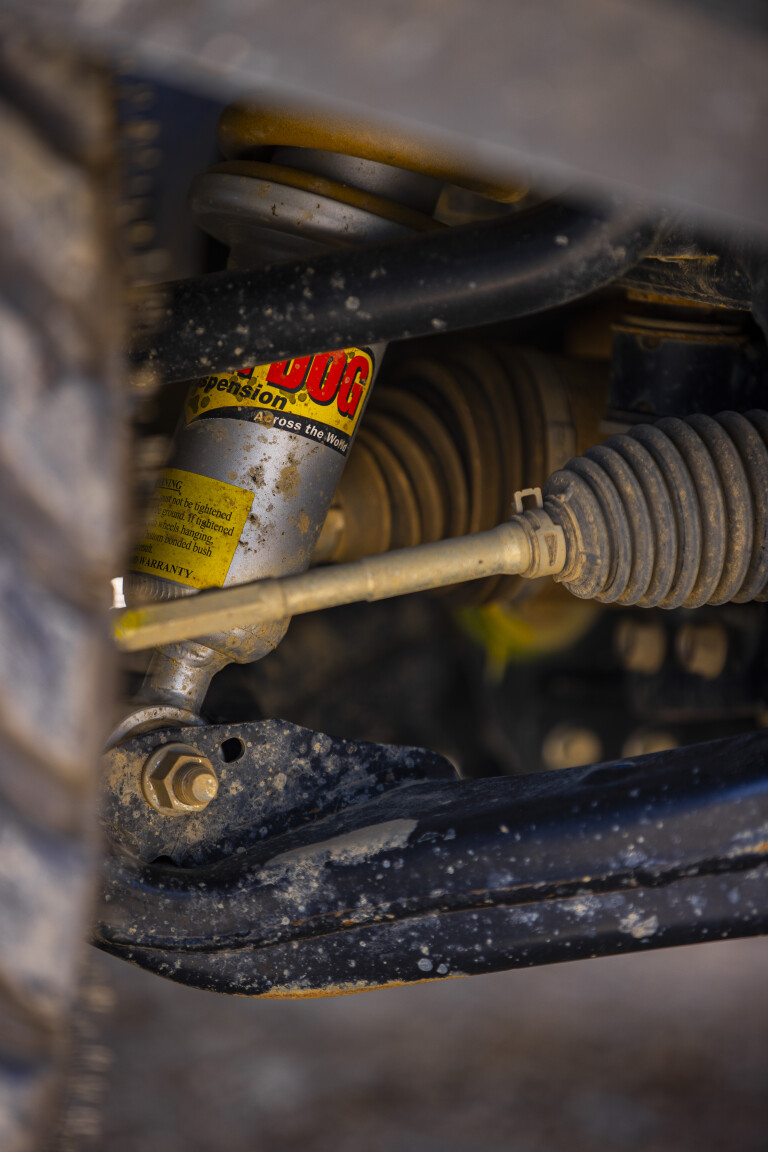
With some extra space in the wheel arches to fill, a set of 265/70R17 Maxxis RAZR mud-terrain tyres were selected. These have been on the vehicle for close to 15,000km now and have been an absolute joy so far. They aren’t noisy for a mud tyre, they aren’t sketchy on wet roads at all, and they grip like super glue when the going gets tough.
The Maxxis tyres have been mounted to 17-inch Fuel Anza alloy wheels from Wheel Pros Australia, which look amazing on the car. We wanted a dark wheel to match the dark colour of the D-MAX, but with a bit of silver to break it up so it’s not too dark. They not only look the part, but gave us a little bit of extra track width, which is always a good thing for stability on- and off-road.
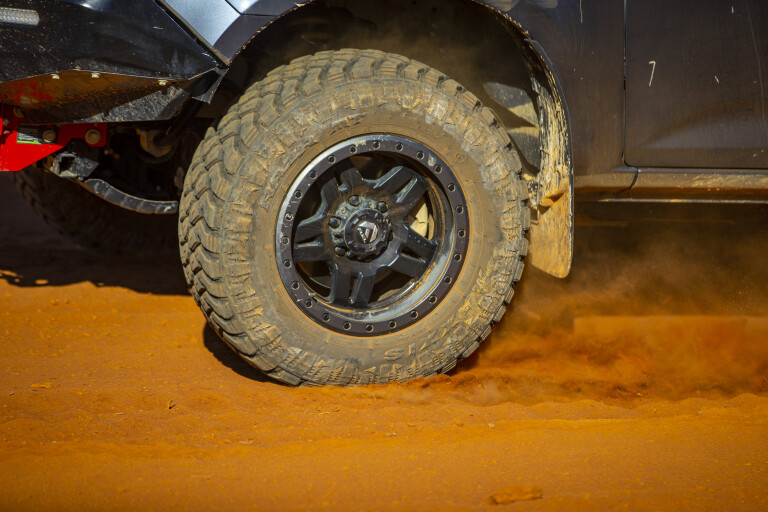
To get a little bit more power from the venerable 3.0L turbo-diesel motor, we had the team at Pacemaker Exhausts build a three-inch King Brown exhaust system for the vehicle (which is now also in production). This not only sounds great without droning at highway speeds, it has helped lower EGTs, meaning that if we were to do a performance tune to the engine down the track (which we’d love to do), things will be nice and safe.
Storage
A solid touring four-wheel drive needs a solid storage system if you are going to retain your sanity on a long trip. It’s safe to say we’ve nailed the storage side of things.
The first storage modification we made was to fit an alloy Yakima LockNLoad roof platform with its RuggedLine mounting system to the roof of the D-MAX. This was a really easy install, providing a place to tie down our MaxTrax recovery boards and swags when on longer trips. Best of all, it’s whisper-quiet on the highway.
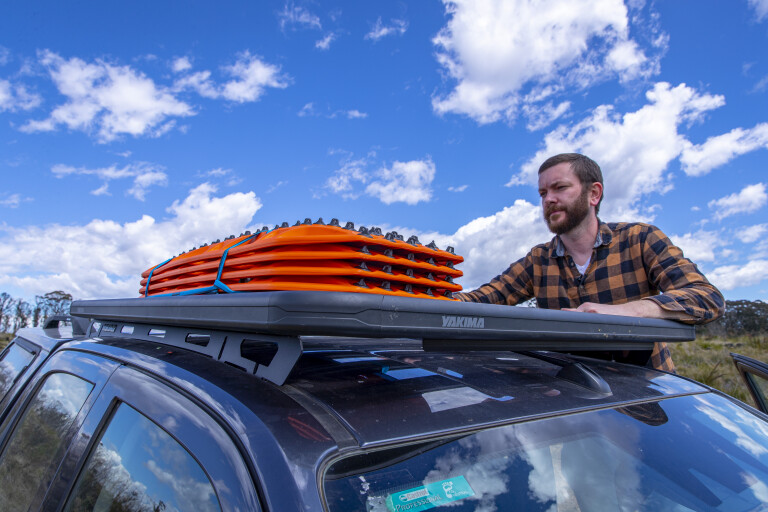
If we head to the tub area, things get pretty serious with a suite of gear from MSA. We selected its Explorer alloy drawer system, which is just first-class quality wise. On top of that, we fitted one of MSA’s drop-down fridge slides and fridge barrier to protect our 60L Companion fridge-freezer, which allows us to stack gear on top and around the fridge safely.
The Companion fridge is pretty special too, as it has a built-in lithium battery, meaning you can run it without being plugged into power for a claimed 16 hours. It also means, when combined with our 100amp Invicta lithium battery, we have more than enough juice to power our 12V needs. Nobody wants warm beer ... nobody.
On the passenger side of the drawers, we also decided it made sense to install an MSA power panel, which allows us to power accessories as well as monitor battery voltage. Inside the drawers there’s plenty of room for tools, cooking gear, food and spare parts.
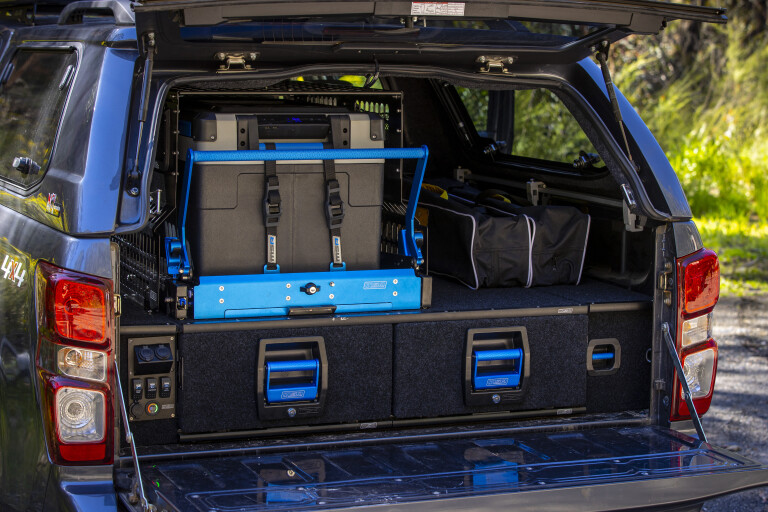
We also managed to squeeze some of our MaxTrax recovery gear in there, but we also have a bag filled with MaxTrax recovery gear such as soft shackles and recovery ropes that lives inside the cabin of the D-MAX, in the event we get really stuck and can’t access the drawers easily.
Not that we’ll be getting stuck too often, as our Isuzu is now set-up for just about anything. All that’s left to do is fill up the tanks and hit the road.



COMMENTS